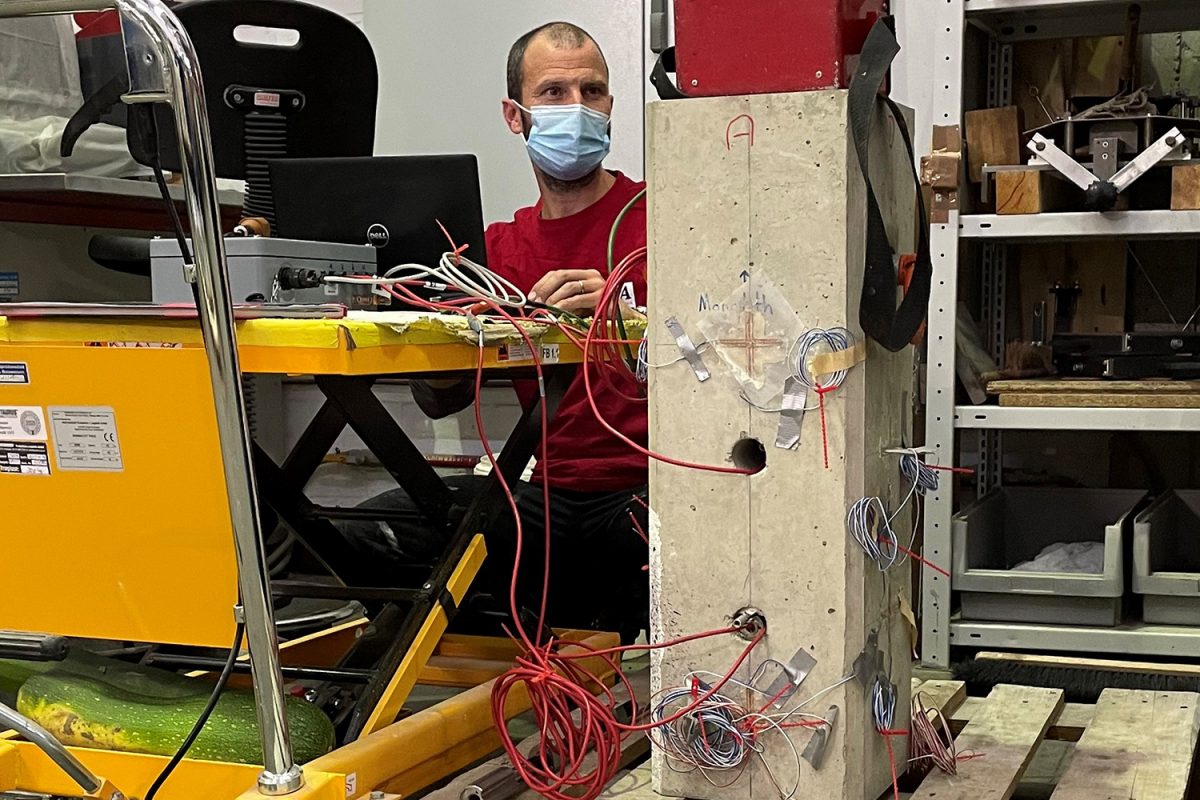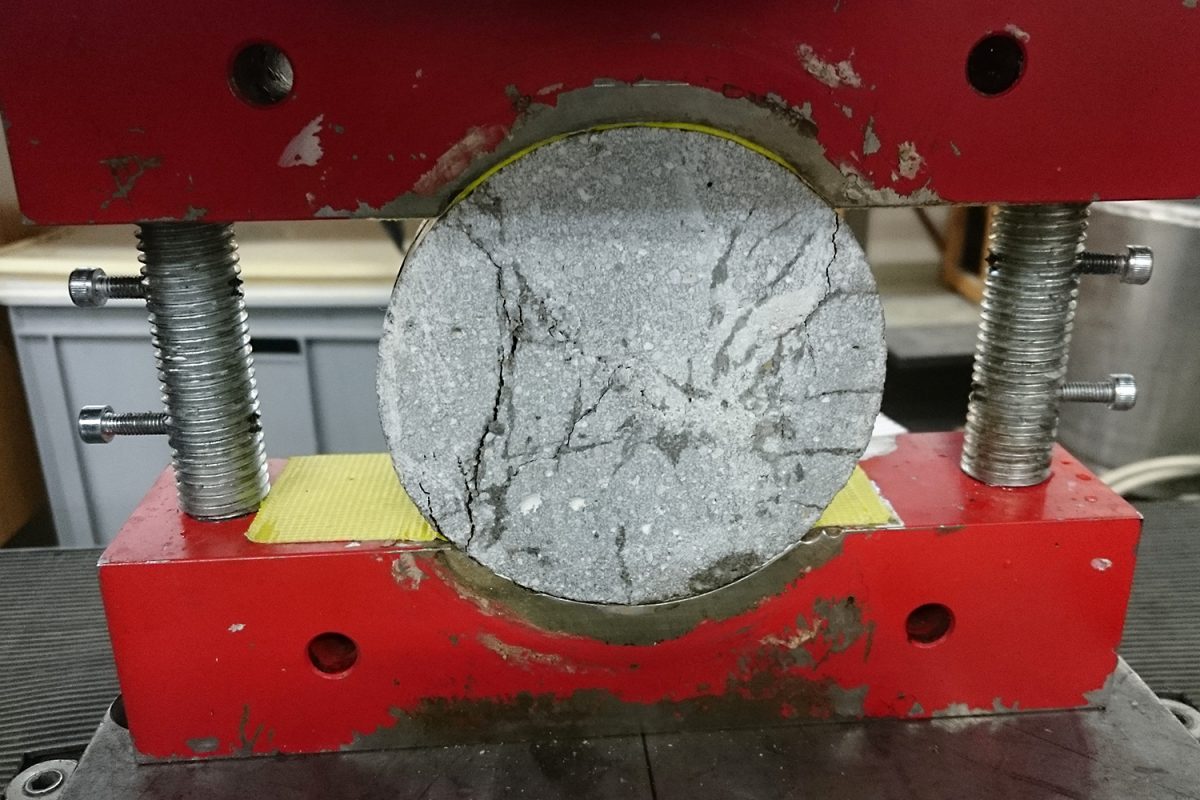Resource-saving construction through restoration A short portrait of Stefan Ullmann from the Research Training Group 2075
How fast does a concrete bridge age? When does it reach the end of its service life? In the Research Training Group 2075 ”Modelling the constitutional evolution of building materials and structures with respect to aging” in the Core Research Area “Future City”, young scientists are researching and developing new methods to investigate ageing processes in buildings. One of the doctoral students is Stefan Ullmann. He is analysing the “Ageing of service life-relevant material resistances of repaired concrete components as a function of mechanical parameters”. We introduce Stefan Ullmann with a short portrait.

As part of the Research Training Group 2075, Stefan Ullmann is doing research on how construction with concrete can be made more resource-efficient. Picture credits: Stefan Ullmann/TU Braunschweig
Who are you and what is your research topic?
I am a graduate civil engineer, an expert planner for the repair of concrete structures and have been a research assistant at the Institute of Building Materials, Concrete Construction and Fire Safety at TU Braunschweig since 2015. Since 2018, I am working as part of the Graduate Programme 2075 on how to make building with concrete more resource-efficient.
Which research question are you working on?
Resource-conserving construction is achieved, among other things, when existing buildings can be protected and repaired. Not only does the preservation of old buildings avoid the potential construction of new buildings and the associated climate-damaging emissions. In addition, the grey energy, i.e. the amount of energy that had to be used for the construction of the building, is conserved. Specifically, my research will clarify how repair materials with different stiffnesses should be combined with each other in order to be able to repair as efficiently and material-conserving as possible with regard to load transfer and durability properties.
What inspires you about your research?
I am particularly enthusiastic about the high level of practical relevance and the wide range that can be achieved with the developed approaches due to the enormous need for repair worldwide.
Why is your topic relevant to the Future City?
The city of the future cannot do without the repair and maintenance of the existing infrastructure. This requires concepts that are practical and easy to implement, which is the main focus for me when developing solutions.
What is special about participating in the Research Training Group “Modelling the constitutional evolution of building materials and structures with respect to aging”?
A strong sense of ‘we’, and the knowledge of being part of a big, overarching and forward-looking goal.



